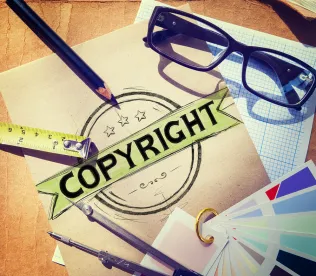On March 22, 2017, the United States Supreme Court, in an opinion written by Justice Clarence Thomas in Star Athletic v. Varsity Brands held that “a feature incorporated into the design of a useful article is eligible for copyright protection only if the feature (1) can be perceived as a two-or three-dimensional work of art separate from the useful article and (2) would qualify as a protectable pictorial, graphic, or sculptural work — either on its own or fixed in some tangible medium of expression — if it were imagined separately from the useful article into which it is incorporated.”[1] The Court set forth a new two-part separability test, resolving a split between circuit courts and upholding the previous Sixth Circuit decision that the stripes, chevrons and other visual elements of Varsity Brands’ cheerleading uniform are eligible for copyright protection.[2] The Court noted that the Copyright Act does not protect “useful articles”[3] but that “the design of a useful article” may be “considered a pictorial, graphic, or sculptural feature” to the extent that “it can be identified separately from, and are capable of existing independently of the utilitarian aspects of the article.”[4] The Court specifically limited the scope of copyright protection, if any, to the designs, excluding the shape, cut and dimensions of the uniforms.[5] The decision also clearly emphasized that it was not deciding whether Varsity’s surface decorations are in fact copyrightable (i.e., satisfy the “modicum of creativity” standard set forth in Feist Publications, Inc. v. Rural Telephone Service, Co., 499 U.S. 341, 358-359 (1991)), and that this determination is remanded for the district court to decide.[6]
The Court noted as a threshold question that separability analysis is needed to determine whether “surface decorations are protected two-dimensional works of graphic art.”[7] Rejecting Star Athletica’s argument that two-dimensional artistic features on the surface of useful articles are “inherently separable” and therefore not subject to the separability test, the Court held that “[t]he ultimate separability question, then, is whether the feature for which copyright is claimed would have been eligible for copyright protection as a pictorial, graphic, or sculptural work had it originally been fixed in some tangible medium other than a useful article before being applied to a useful article.”[8] The Court found that the statute expressly provides that the “‘design of a useful article’ can include two-dimensional ‘pictorial’ and ‘graphic’ features, and separability analysis applies to those features just as it does three-dimensional ‘sculptural’ features.”[9]
The two-part test enunciated in Star Athletic, LLC v. Varsity Brands, Inc. requires first the “separate identification” of the work in question, meaning that an observer must be able to “look at the useful article and spot some two-or-three-dimensional element that appears to have pictorial, graphic, or sculptural qualities.”[10] This first element may be problematic because it entails subjective analysis, as made plain through a comparison of the majority and dissenting opinions. The second element of the test is more difficult to satisfy and requires that the work’s extracted “feature must be able to exist as its own pictorial, graphic, or sculptural work” and not merely be a “utilitarian aspect” of the useful article.[11]
Applying this new two-part test to the facts of the case, Justice Thomas concluded that the decorations are separable from the uniforms and therefore eligible for copyright protection because: (1) one can identify the decorations as features having pictorial, graphic, or sculptural qualities and (2) the surface decorations would qualify as two-dimensional works of art if separated from the uniform and applied in another medium, for example, a painter’s canvas.[12] For the purposes of this analysis, it does not matter that applying such designs onto a canvas will result in creating “pictures of cheerleader uniforms” and would retain the outline of a cheerleading uniform.[13] If an artwork printed on the surface of a guitar could be protected, the fact that the entire design is removed from the guitar’s surface and placed on an album cover corresponds to the shape of a guitar does not “replicate” the guitar as a useful article and should not be a bar to copyright.
The majority opinion dismissed Star Athletica’s contention that the designs are not copyrightable because they serve functional purposes of identifying the wearer as a cheerleader and enhancing the wearer’s appearance and figure.[14] The Court held that copyright protection is not limited to features that are “solely artistic” and may extend to “applied art” that is at least in part utilitarian.[15]
Justice Ginsburg concurred in the Court’s judgment but not in its opinion stating that consideration of the separability test “is unwarranted because the designs at issue are not designs of useful articles.[16] Instead, the designs are themselves copyrightable pictorial or graphic works reproduced on useful articles.”[17] The concurrence further stated that: “In short, Varsity’s designs are not themselves useful articles meet for separability determination under §101; they are standalone PGS [i.e., pictorial, graphic, or sculptural] works that may gain copyright protection as such, including the exclusive right to reproduce the designs on useful articles.”[18]
Justice Breyer, in his dissenting opinion joined by Justice Kennedy, argued that copyright should extend only to designs that are physically separable without destroying the useful object.[19] The dissent stated that: “. . . I do not agree that the designs that Varsity Brands, Inc. submitted to the Copyright Office are eligible for copyright protection. Even applying the majority’s test, the designs cannot ‘be perceived as . . . two- or three-dimensional work[s] of art separate from the useful article.’”[20] The dissent observed that “a decision by this Court to grant protection to the design of a garment would grant the designer protection that the Congress refused to provide.[21] It would risk increased prices and unforeseeable disruption in the clothing industry, which in the United States alone encompasses nearly $370 billion in annual spending and 1.8 million jobs.”[22]
[1] Star Athletic, LLC v. Varsity Brands, Inc., No. 15—866, slip. op. at 7 (Mar. 22, 2017), https://www.supremecourt.gov/opinions/16pdf/15-866_0971.pdf.
[2] Sheppard Mullin’s previous blog report of the Court of Appeals opinion is available here: http://www.fashionapparellawblog.com/2016/05/articles/fashion-cases/rah-rah-sis-boom-bah-supreme-court-to-decide-whether-copyright-act-protects-cheerleader-uniform-designs/.
[3] “Useful articles” is not included in the list of “works of authorship” under 17 U.S.C. §102(a).
[4] Star Athletic, 580 U.S. at 7.
[5] Id. at 12.
[6] Id. at 11 n.1.
[7] Id. at 4-5 (citing 2 W. Patry, Copyright §3:151, p. 3-485 (2016)).
[8] Id. at 8.
[9] Id. at 5.
[10] Id. at 7.
[11] Id.
[12] Id. at 10. The new test raises a question as to what will be considered a “work of art” for purposes of identifying what are the potentially copyrightable elements.
[13] Id. at 11.
[14] Id. at 13.
[15] Id. at 14.
[16] Id. at 1 (Ginsburg, J., concurring).
[17] Id.
[18] Id. at 3
[19] Id. at 1 (Breyer, J., dissenting).
[20] Id.
[21] Id. at 9.
[22] Id.



 />i
/>i

